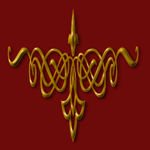





|
|
Union Bar, Amador County Ghost Town | ||
|
As nearly as may be determined, Union Bar was completely obliterated in the great ~ flood and inundation of the early 1860s that destroyed Poverty Bar and Put's Bar, and erased all traces of human occupancy in a dozen riverside communities. |
|
|
|
What we may dredge up must come from the written and printed page. Of this the most informative material comes from numerous references in the Sacramento Bee to consignments of Springfield rifles, minie ball, powder, and military equipment of every type in use at that time, sent to the Union Guards of Union Bar. Research in the State Library at Sacramento, the Huntington Library at San Marino, and the Bancroft Library at Berkeley might give us some light on the organization. What we have upon it here is essentially nothing. |
||
|
This company and its requisite materiel presuppose an armory and arsenal. There are, in contemporary news briefs, references tantalizingly short, to such building. A thing that might help, if it were available, would be a look into the state's military archives that would tell us why Union Bar was selected as the base of a militia unit over the competition of Lancha Plana, Poverty Bar and Put's Bar, each a thriving, populous, and aggressive community. |
|
|
In the process of building the Pardee Dam, the buckets of the machinery loading gravel and sand into the cars of the high line monorail uncovered a whole grid of stub masonry walls of a thickness of 2 to 3 feet. This was on the river's north bank. At the time it was conjectured that this was Union Bar. It probably was. Of anything tangible and physical of this place, we have about as much as we have of King Arthur's Land of Lyonesse or of Plato's Atlantis. We know for a certainty that hundreds of miners toiled here and wrote letters to loved ones far distant. One of these letters we may hope to someday find that will give us more information and a shaft of light into what is now mostly darkness. We do not know how much weight the Union Guards placed in the scales, but we do know that it was one component that kept California on the side of the Union. | ||

| ||
|
Information, photographs courtesy of the Amador County Archives, The Historical Marker Database, The Chronicling America Database, and Larry Cenotto, Amador County's Historian CONTACT US
|
||

